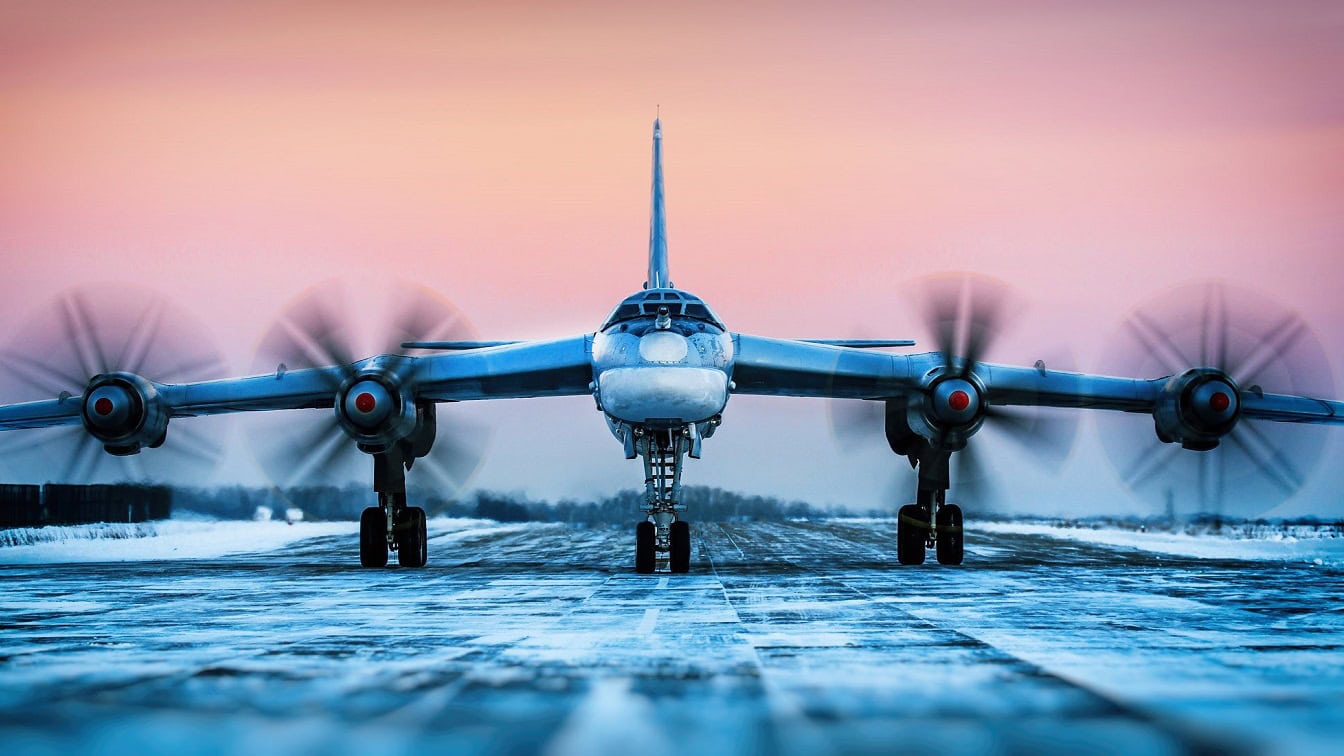The Russian Tupolev Tu-95 (NATO reporting name “Bear”) is among the oldest aircraft bomber design still in operation today and the only propeller-driven bomber in service anywhere in the world.
However, Moscow is making every effort to keep those old workhorses flying.
(Subscribe to Our YouTube Channel Here. 19FortyFive publishes original videos every day.)
This week, it was announced that a heavily upgraded Tupolev Tu-95MSM strategic missile-carrying bomber successfully performed a test flight.
“Under the test program, a heavily upgraded Tu-95MSM missile-carrying bomber performed a new flight. During the flight, all the necessary tests of its systems and equipment were carried out,” the press office of the United Aircraft Corporation (UAC) announced on Monday via a statement according to a report from Tass.
Old Tu-95 Bear Getting Extended Life
The work to upgrade the Tu-95MS strategic bomber to the Tu-95MSM level is now being carried out by the UAC subsidiaries Tupolev and Beriev Aircraft Companies. The modernization efforts are meant to improve the long-range bomber’s performance, as well as its efficiency and reliability for accomplishing assigned missions, the press office noted.
“The Tu-95MSM is a strategic missile-carrying bomber prototype and a new modification of the world’s fastest Tu-95MS turboprop aircraft,” the report added.
Work on the upgraded bombers reportedly began in 2018, and the aircraft have been equipped with new Novella-NV1.021 radar, SOI-021 information display system, Meteor-NM2 airborne defense complex and upgraded Kuznetsov NK-12MPM turboprop engines manufactured by Tupolev.
The first flight of a Tu-95MSM was conducted at the Taganrog Aviation Plant in the Rostov Oblast, Russia in August 2020.
New Roles
At this time, it is still unclear how many of the upgraded Tu-95MS bombers will receive the additional updates – or even when the work might be completed.
As a result of the modernization, the Tu-95 is expected to remain in service with the Russian Aerospace Forces until 2040.
By the time the Tu-95 is retired, it could have served for upwards of 90 years, having first taken flight in 1952, while it entered service in 1956. During the Cold War, the Bear was one of the main components of the Soviet Union’s nuclear triad.
Following the dissolution of the Soviet Union, the Tu-95’s role evolved into what Russia defined as a “strategic missile carrier,” and the Long-Range Aviation branch of the Russian Aerospace Force operated a fleet of 47 Tu-95s. However, last month a drone strike at the Engels-2 strategic bomber airbase reportedly damaged two Tu-95s and it is unclear if those aircraft have been – or can even be – repaired and returned to service.
Despite entering service in the 1950s, the Bear didn’t get to employ its claws until 2015 when the bombers were first deployed in combat in operations in Syria.
However, Moscow is reportedly making up for lost time, as the Tu-95 has been used by Russia to launch Kh-101 cruise missiles, targeting Ukrainian civilian infrastructures that have included airports, and hydraulic and even nuclear power plants.
The current versions of the Tu-95 can carry a total of eight Kh-101 missiles on its external pylons.
Author Experience and Expertise: A Senior Editor for 19FortyFive, Peter Suciu is a Michigan-based writer. He has contributed to more than four dozen magazines, newspapers, and websites with over 3,200 published pieces over a twenty-year career in journalism. He regularly writes about military hardware, firearms history, cybersecurity, politics, and international affairs. Peter is also a Contributing Writer for Forbes and Clearance Jobs. You can follow him on Twitter: @PeterSuciu.

